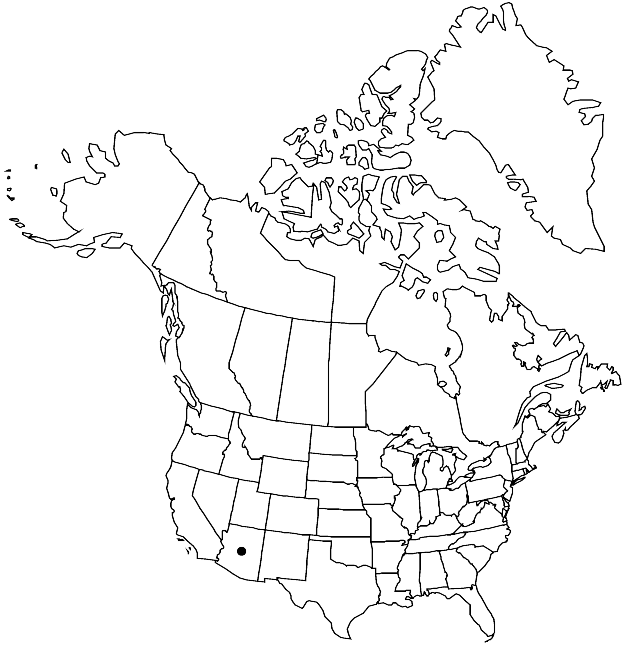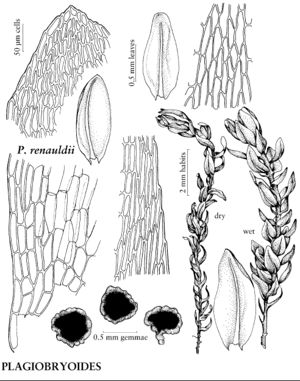Plagiobryoides renauldii
Phytologia 91: 499. 2009.
Plants dark green to olive green. Stems 1–3 (–4) cm, not or weakly julaceous, innovations few; rhizoids few on proximal stem. Leaves distant, somewhat contorted when dry, erect when moist, broadly ovate to suborbicular, concave, 0.5–2 (–3.5) mm; base somewhat decurrent, red-green; margins plane or recurved proximally, 1-stratose, limbidium absent; apex broadly acute to obtuse; costa not reaching apex to rarely percurrent; proximal laminal cells rectangular, (60–) 80–100 × 16–24 µm, 3–5: 1, bulging, walls thin; distal cells irregular, 25–50 × 16–25 µm, 1–2 (–3):1, walls thin. Specialized asexual reproduction by rhizoidal tubers, on rhizoids at base of stem and in most proximal leaves, (200–) 300–500 µm. Sexual condition apparently dioicous. Sporophytes unknown.
Habitat: Wet soil, soil over rock, in streams
Elevation: high elevations (2200 m)
Distribution

Ariz., Mexico, West Indies, Central America, South America
Discussion
Collections of Plagiobryoides renauldii were made in 2007 on the east side of the Chiricahua Mountains along a stream, occurring with P. incrassatolimbata. This is a robust aquatic species of Plagiobryoides similar overall to P. incrassatolimbata, but differing in the lack of a limbidium, the rounded apex, distant leaves, and rhizoidal tubers.
Selected References
None.
Lower Taxa
"narrower" is not a number."narrow" is not a number.
